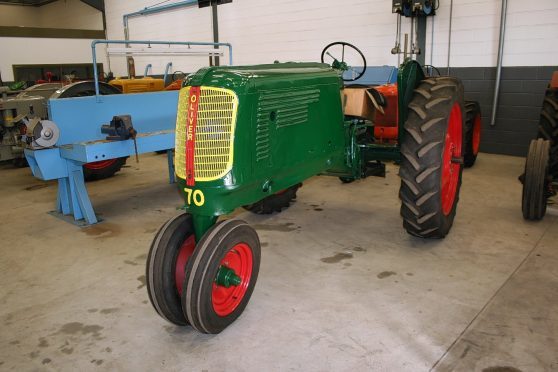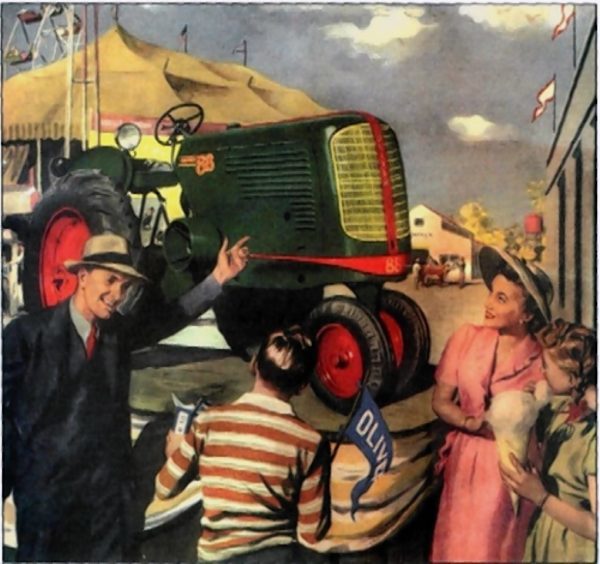It has been described by many as the prettiest tractor ever built and you can see why. The tractor is of course Oliver 70 and it was launched with its striking new look 80 years ago.
The Oliver 70 had originally appeared in 1935 and its debut appearance was no less striking.
Oliver was a well-known US concern famous for its range of ploughs first fashioned by Scottish immigrant James Oliver in the 19th century.
Over the years Oliver added other machinery to its catalogue but by the early 20th century needed to add tractors. Although having begun a tractor design of its own, it was the 1929 merger with Hart Parr that brought a line of successful “tractors”, a name coined by Hart Parr.
The merger also brought in Nichols and Shepard, the American Seeding Co and later the McKenzie Manufacturing Co which gave the new concern a full line of equipment.
As the Oliver firm had the greatest assets its name was chosen although the Hart Parr name was still displayed on the tractors for a time. That was until the first Oliver 70 came along in 1935 when the Oliver title took top billing over the Hart Parr script.
If Hart Parr was first to coin the title tractor the new concern was the first to introduce styling to agricultural machines.
The new Oliver was striking with clean lines and automobile style tin work. The tractor was fitted with a six-cylinder engine complete with electric starting. The engine ran on 70-octane gasoline hence the choice of Oliver 70 which replaced the two horsepower figure nomenclature of the old Hart Parr designs. A TVO version was also offered ideally suiting the UK market.
Electric starting meant that lighting could be fitted and latterly a six-speed gearbox was also fitted. One of the great features of the tractor was the ability to insert round pipes through the two holes in the cast iron chassis to mount the tool bar equipment. Another revolutionary Oliver feature was the optional tip toe, steel row crop wheels for working in delicate crops. Although row crop usage was a major intention for the tractor other versions included standard, high clearance, industrial and orchard versions.
In 1937 Oliver gave the tractor a re-style improving the looks further. Out went the flat radiator grill to be replaced with a much more rounded version which flowed into the fairings on the bonnet. The cream radiator grill contrasted nicely with the dark green and red of the bodywork and wheels. The tractor was one of Oliver’s best sellers and the company even built them in red livery for the Canadian Cockshutt company.
In the same year Oliver also brought out its biggest tractor, the Oliver 90, which replaced 28-44. This tractor was a much squarer looking machine and was not available as a row crop. Fitting in-between the 70 and 90 was the Oliver 80 and although it was initially produced in stylised form it reverted to the square looks of the 90 but a row crop version of this one was offered.
In 1940 Oliver offered a fourth model when the baby Oliver 60 was launched. This tractor was styled like the 70 and came in various options too. The new tractors had helped Oliver pull through the depression and into a profitable war period. Not only had the tractors helped Oliver to greater sales but its range of implements were selling well too. Oliver had become a truly full line concern like its competitors IH, JD, AC and Case.
Oliver ploughs had been available here since 1879 when Thos Scott of Stirling began to import them until 1885 when John Wallace and Son of Glasgow became distributors. Still importing Oliver by the time these tractors were available, they had branches at Edinburgh, Dumfries, Cupar, Balfron, Wishaw, Aberfeldy and a larger one that handled tractors at Perth. Their main English depot was at Welwyn Garden City with others at Carlisle and Oldham. In the north-east Neil Ross Tractors, with bases at Ellon and others at Cornhill and Laurencekirk, were agents for the prettiest looking tractor.











